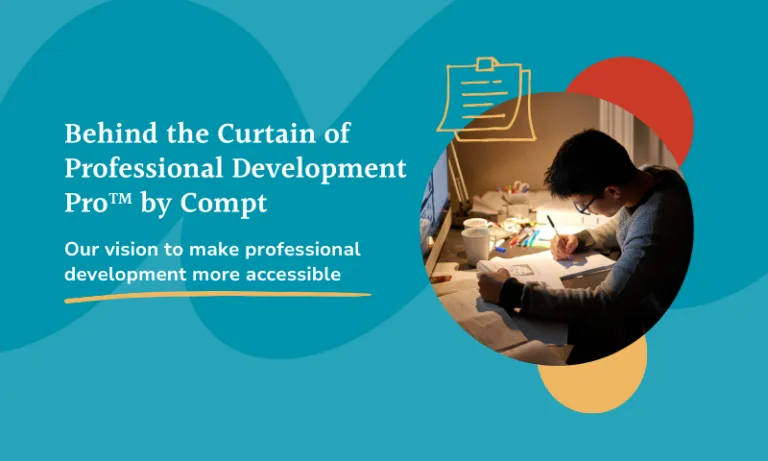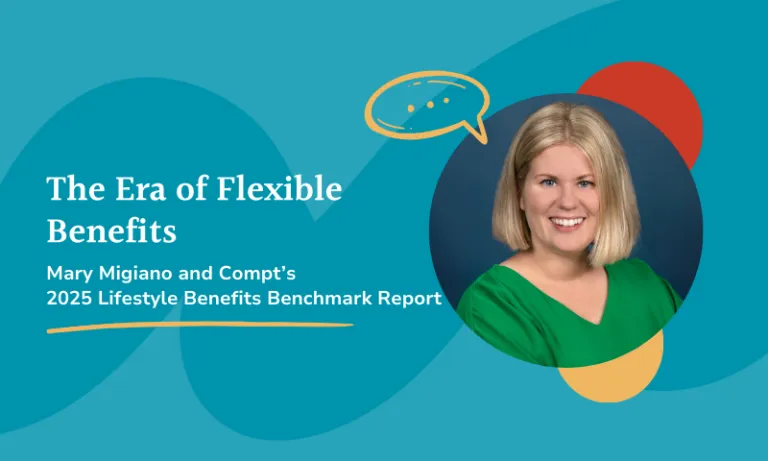A learning and development stipend is an amount of money given to employees for them to spend on learning initiatives to help them advance their skills.
Learning and development stipends for employees have been gaining in popularity over the past few years, especially as a way to both improve employee productivity and increase retention.
But, as more companies seek to understand the state of learning & development and find the right solution for their workforce, more questions arise.
That’s why we developed the definitive guide to everything you need to know about these education-forward, people-first stipends:
What is a Learning Stipend?
First, a definition:
A learning or education stipend is a sum of money given to employees for them to spend on learning initiatives that are relevant to them and their needs.
Further details on what they are:
- They are also often referred to as educational stipends, learning stipends, or professional development accounts.
- Learning stipends can be given out on a monthly, quarterly, semi-annual, or annual basis.
- They are nontaxable items.
- They can range in value from a few hundred to several thousand dollars.
- They can be used for a variety of educational opportunities, such as conferences, workshops, online courses, books, and training materials.
- Some companies even offer creative ways to use the stipend, such as funding a new hobby or language class.

Buffer: A Primary Example of a Learning Stipend
Here you can see a screenshot from Buffer’s $20/month learning and development stipend.
To achieve their learning goals, it wasn’t just one learning platform or program that Buffer’s employees used; their team spent money on 15 unique categories.
How could an HR or People Operations professional create a program that supports this diversity of needs?
This perfectly illustrates the power of a perk stipend or lifestyle spending accounts.

Foster a culture of learning and continual growth with easy-to-manage, visible L&D workflows
(Compt customers see 90% participation rates!)
Why Use Learning & Development Stipends
Learning and development can take on various forms: coaching, classes, conferences, training, learning through books, and many others. The fact of the matter is one-size-fits-all training doesn’t work anymore. Today’s employees expect learning that’s tailored to their current skills, future career goals, and unique schedules.
Learning stipends have quickly emerged as one of the best — and most popular — solutions for encouraging employees to always be learning. A learning and development stipend, rather than a formal learning platform, has really become the go-to education-based lifestyle benefits solution for HR teams because it’s so much more flexible and effective than the traditional “we pick the learning process or path” for you.
The five biggest benefits of stipends vs. other L&D benefits models:
- Stipends are more cost-effective. Traditional learning platforms can be expensive, especially if every employee isn’t fully utilizing them. When you offer a stipend through Compt’s stipend reimbursement model, you’re only paying for what employees are actually using.
- They’re also more flexible. When designing any stipend, flexibility is the most important factor. Stipends are inclusive, remote-friendly, allow for life changes, and are easy to understand for your employees. Not to mention, they can be used for anything learning or development-related!
- They facilitate more learning and development. Because you let people pick the best learning for them, they’re more likely to engage with stipends: this means more usage, which means more learning.
- Employees can take ownership of their growth. When everyone can choose the resources that suit their learning preferences, they’ll be happier with your benefits package overall, and be more invested in their progress. And if they opt-in to share their learning on LinkedIn, it also creates community and connection for those learning the same thing.
HR has less burden (plus better insights). Employees’ ability to personalize their L&D experience means HR and management don’t have to figure out which training to suggest to each employee. On top of that, with Compt, you can get the latest insights from other professionals on what they’re learning and what they thought about it on a scale of 1 to 5.
The Data on Learning Stipends
Educational stipends aren’t new by any means. But, increasingly, companies are recognizing the need for upskilling to meet evolving workplace demands, particularly in fields like AI and technology.
Below find stories, relevant statistics, and more from companies that are offering these to their employees:
- According to ADP Research Institute, only 47% of employees think their companies invest in the skills they need to advance.
- Only one in five L&D practitioners strongly agree they are prioritizing the skills their organization will need in the future.
- Andrew Geant, cofounder of Wyzant, believes learning stipends have proven effective at boosting employee retention and even improving their recruiting capabilities in an increasingly competitive market. “In interviews, potential employees often cite the learning stipend as a top reason they applied,” Geant has said.
- Among millennials — who make up 35% of the workforce, the largest generational group — nearly nine in 10 say opportunities for career growth and professional development are “very important to them” in a job.
Among Compt users, they’re also quite popular — in our 2025 Lifestyle Benefits Benchmarking Report, we found that 1 in 5 Compt users offer stipends for professional development of some kind. And they’re growing in prevalence year over year — spending on professional development increased from 13.3% in 2023 to 15% in 2024.
7 Examples of Learning Stipends
There is no one-size-fits-all learning stipend, as every company’s size, budget, and focus on learning are different. Check out how the culture giants below leverage the flexibility and personalization of learning stipends.
1. HelpScout
Help Scout has a “Learn Something Stipend” where each employee is given $1,800 to spend annually on learning.
2. Buffer
As mentioned above, Buffer spends $20/month on every employee to learn in three main ways: core learning, stretch learning, and holistic development, and in 2025 they launched a $250 annual stipend dedicated to AI tools.
3. Gong
While the amount given to employees is unknown, Gong does offer its employees an “education & learning stipend for personal growth and development.”
4. VTS
Compt customer, VTS, offers their employees $1,500 annual stipend to support continuing education, with a portion that can be used specifically for health and wellness purchases.
5. Udemy
Udemy offers up to $1,500 annually for external learning opportunities after six months of employment.
6. Smartsheet
Smartsheet provides their employees $1,000/year to spend on learning-related items.
7. Atlassian
Atlassian provides their people with a “tuition learning budget.”
How to Make the Most of Your Learning Stipends
If you invest in your people, they will invest in you.
As famous speaker Jim Rohn once said, “When you invest in people and lift them toward their potential, they will love you for it.” From career coaching to conferences and books, learning stipends let managers and employees pick the best path for them to reach their potential.
Below are some ideas as to how your employees and your company can get the most out of your learning stipend:
Formalize it with process and documentation.
A learning stipend that isn’t documented and doesn’t have a formal process only leads to confusion.
We’ve all been at organizations that haven’t properly outlined exactly what the benefit is, what’s covered, and how to take advantage. This leads to more questions for employees and more questions for HR to address.
Eliminate questions, confusion, and lopsided support for only some people by properly documenting how much people have, how it can be used, and how to best redeem this perk. You can document this process on an internal wiki, like Atlassian or Tettra, or manage the whole process through a perk software like Compt (hey there!).
Include it in your job postings.
Job candidates care tremendously about benefits (in some cases, more so than the salary). Indeed’s 2024 Workforce Insights Report, which explores in-depth what motivates job seekers, finds that the driving force behind more than one-third of workers’ job search is the desire for better benefits.
Since so many job seekers hold professional development opportunities in such high regard, why not make your continuous learning stipend a prominent selling point in job postings? Let your potential employees know that you’re committed to their continued development and you make this possible by giving them a stipend to pick the best methods of learning for them.
Set a metric for adoption or usage.
At Compt, we find that ~94% of employees take advantage of their company’s monthly stipends, depending on the stipend program.
Set a utilization, adoption, or participation metric that you’re shooting for, and then create a process to support that.
One example of a good process is developing manager training to help find ways to get their team members to take advantage of the programs available.
Keep in mind adoption will vary based on the stipend in question. For instance, a category like Food or Health and Wellness will have a higher adoption rate than L&D because it’s less of a general interest category.
Where relevant, tie back to a company value
Since today’s labor market is crowded. With three of the six billion companies in today’s US labor market being hyper-competitive, finding and keeping talent isn’t easy. By having a clear and powerful mission, vision, and values (MVV), you’re able to find people who have similar beliefs which will attract them to your business.
Double down on your MVV by investing in it. If you have a value of “Always be learning”, then having a learning stipend tied to that really helps you walk the walk.

Design your program according to your budget.
When you implement an L&D stipend program, you have two major considerations: (a) how much you’ll offer and (b) how often you’ll make those payments.
As you can see from the seven examples we’ve given above, learning and professional development stipends vary wildly. Some companies, like Buffer, spend $20 per month. Others, like Balsamiq, give $3,000 per year. Among Compt users, stipend amounts range from $100 to $2,000 on average.
Design your program for maximum utilization.
When you implement an L&D stipend program, you have two major considerations: (a) how much you’ll offer and (b) how often you’ll make those payments.
As you can see from the seven examples we’ve given above, learning and professional development stipends vary wildly. Some companies, like Buffer, spend $20 per month. Others, like Balsamiq, give $3,000 per year. Among Compt users, stipend amounts range from $100 to $2,000 on average.
As for the timing, we’ve found that most companies offer L&D stipends on an annual basis. This allows them to consider larger investments, like a course or conference, the upfront costs of which wouldn’t be coverable with a smaller monthly or quarterly stipend.
Encourage employees to pursue unique learning opportunities.
In one of our recent Getting Personal with Compt episodes, we spoke with learning and development strategist Molly Dennen. According to her, employees’ skills and experience go far beyond their hard skills. Each of your team members has broader soft skills and interests that make them dynamic and interesting.
“The problem is that we’ve asked people to not be themselves. We’ve asked them to be a very specific version with 15 years of experience using this one program, this one app, this one, whatever it may be. And so we’ve asked them to ignore the other components that make them interesting people.”
When people approach tasks and challenges at work, they do so by applying what they’ve learned on their own personal learning journeys. If you’re solely looking at the textbook hard skills, you’ll probably miss that nuance. That’s why, to get the most out of a professional development initiative, you have to allow employees to channel what makes them a unique asset to the company.
What People Buy with their Continuous Learning Stipend
As we mentioned above, you can keep your stipend’s spending as open or closed as you want. We find that the more you let your team decide what’s best for them, the happier, more productive and empowered they will be.
In short? It’s best to make it as open as possible.
In our 2025 Benchmarking Report, we analyzed more than 2,500 claims from professional development vendors to understand what today’s employees truly prioritize. Here are the top categories Compt users have purchased through their stipends:
- Books & eBooks (hard copy, audio, and Kindle)
- Certifications related to their professional field
- Conferences and networking events
- Career coaching services
- Membership fees for professional organizations
- Online courses (e.g., Udemy, Coursera, or a Udacity Nanodegree)
- Subscriptions (e.g., Babbel, Blinkist, LinkedIn Learning)
- Tools and productivity software
The costs associated with graduate degree programs, local meetups, and workshops are other examples of expenses your employees can potentially cover with their stipends.
What makes Compt so special is that you can also use it to manage ad-hoc learning and development requests for tuition reimbursement, and other reimbursements for things like courses, classes, and professional certifications.

Other Popular Types of Perk Stipends
A perk stipend makes it possible for companies to offer more perks, with less money and ensure that they are personalized to meet the needs of their people.
Below are some of the popular types of stipends:
- General perk stipend: Companies combine one or more of the stipends below to create a general perk stipend that allows employees to pick from many spending categories.
- Health & wellness stipend
- Remote work stipend
- Equipment stipends
- Meal or food stipends
- Cell phone stipend
- Pet care stipends
- Travel stipends
- Experience stipends
- Charitable giving stipend
- Commuter stipend
- Student loan stipends
- Employee bonus stipends
Is your L&D Workflow Working for You, or Against You?
Our new professional development module streamlines requests, approvals, and budget tracking, eliminating complex workflows and empowering employees to grow and develop. Sound like something your team could use? We’re just a click away!
Originally published in 2020, this post has been recently updated for clarity and relevance for our readers.







